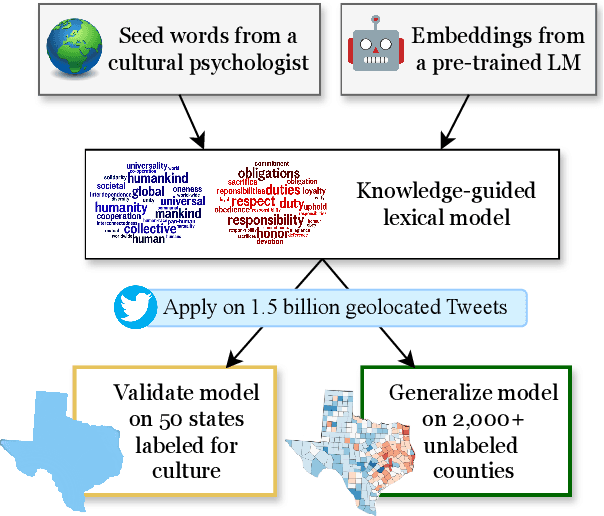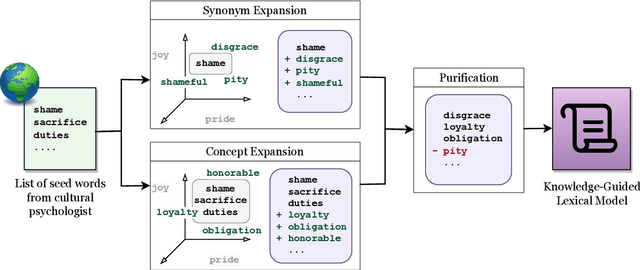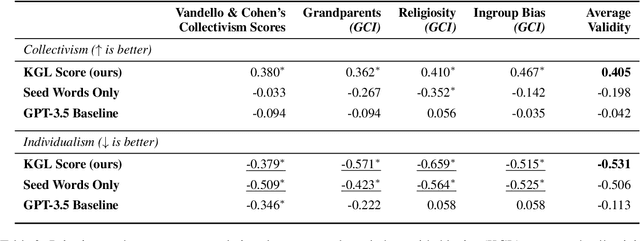Building Knowledge-Guided Lexica to Model Cultural Variation
Paper and Code
Jun 17, 2024



Cultural variation exists between nations (e.g., the United States vs. China), but also within regions (e.g., California vs. Texas, Los Angeles vs. San Francisco). Measuring this regional cultural variation can illuminate how and why people think and behave differently. Historically, it has been difficult to computationally model cultural variation due to a lack of training data and scalability constraints. In this work, we introduce a new research problem for the NLP community: How do we measure variation in cultural constructs across regions using language? We then provide a scalable solution: building knowledge-guided lexica to model cultural variation, encouraging future work at the intersection of NLP and cultural understanding. We also highlight modern LLMs' failure to measure cultural variation or generate culturally varied language.
 Add to Chrome
Add to Chrome Add to Firefox
Add to Firefox Add to Edge
Add to Edge